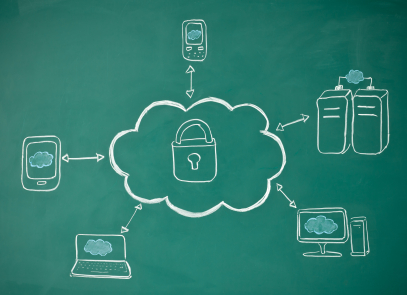Fast Food Chain Arby’s Acknowledges Breach
jeudi 9 février 2017 à 18:56Sources at nearly a half-dozen banks and credit unions independently reached out over the past 48 hours to inquire if I’d heard anything about a data breach at Arby’s fast-food restaurants. Asked about the rumors, Arby’s told KrebsOnSecurity that it recently remediated a breach involving malicious software installed on payment card systems at hundreds of its restaurant locations nationwide.
 A spokesperson for Atlanta, Ga.-based Arby’s said the company was first notified by industry partners in mid-January about a breach at some stores, but that it had not gone public about the incident at the request of the FBI.
A spokesperson for Atlanta, Ga.-based Arby’s said the company was first notified by industry partners in mid-January about a breach at some stores, but that it had not gone public about the incident at the request of the FBI.
“Arby’s Restaurant Group, Inc. (ARG) was recently provided with information that prompted it to launch an investigation of its payment card systems,” the company said in a written statement provided to KrebsOnSecurity.
“Upon learning of the incident, ARG immediately notified law enforcement and enlisted the expertise of leading security experts, including Mandiant,” their statement continued. “While the investigation is ongoing, ARG quickly took measures to contain this incident and eradicate the malware from systems at restaurants that were impacted.”
Arby’s said the breach involved malware placed on payment systems inside Arby’s corporate stores, and that Arby’s franchised restaurant locations were not impacted.
Arby’s has more than 3,330 stores in the United States, and roughly one-third of those are corporate-owned. The remaining stores are franchises. However, this distinction is likely to be lost on Arby’s customers until the company releases more information about individual restaurant locations affected by the breach.
“Although there are over 1,000 corporate Arby’s restaurants, not all of the corporate restaurants were affected,” said Christopher Fuller, Arby’s senior vice president of communications. “But this is the most important point: That we have fully contained and eradicated the malware that was on our point-of-sale systems.”
The first clues about a possible breach at the sandwich chain came in a non-public alert issued by PSCU, a service organization that serves more than 800 credit unions.
The alert sent to PSCU member banks advised that PSCU had just received very long lists of compromised card numbers from both Visa and MasterCard. The alerts stated that a breach at an unnamed retailer compromised more than 355,000 credit and debit cards issued by PCSU member banks.
“PSCU believes the alerts are associated with a large fast food restaurant chain, yet to be announced to the public,” reads the alert, which was sent only to PSCU member banks.
Arby’s declined to say how long the malware was thought to have stolen credit and debit card data from infected corporate payment systems. But the PSCU notice said the breach is estimated to have occurred between Oct. 25, 2016 and January 19, 2017.
Such a large alert from the card associations is generally a sign of a sizable nationwide breach, as this is likely just the first of many alerts Visa and MasterCard will send to card-issuing banks regarding accounts that were compromised in the intrusion. If history is any lesson, some financial institutions will respond by re-issuing thousands of customer cards, while other (likely larger) institutions will focus on managing fraud losses on the compromised cards.
The breach at Arby’s comes as many credit unions and smaller banks are still feeling the financial pain from fraud related to a similar breach at the fast food chain Wendy’s. KrebsOnSecurity broke the news of that breach in January 2016, but the company didn’t announce it had fully removed the malware from its systems until May 2016. But two months after that the company was forced to admit that many Wendy’s locations were still compromised.
B. Dan Berger, president and CEO of the National Association of Federal Credit Unions, said the number of cards that PSCU told member banks were likely exposed in this breach is roughly in line with the numbers released not long after news of the Wendy’s breach broke.
“Hundreds of thousands of cards is a big number, and with the Wendy’s breach, the alerts we were getting from Visa and MasterCard were in the six-digit ranges for sure,” Berger said. “That’s probably one of the biggest numbers I’ve heard.”
Berger said the Wendy’s breach was especially painful because the company was re-compromised after it scrubbed its payment systems of malicious software. Many banks and credit unions ended up re-issuing customer cards several times throughout last year after loyal Wendy’s customers re-compromised their brand new cards again and again because they routinely ate at multiple Wendy’s locations throughout the month.
“We had institutions that stopped approving debit and credit transactions through Wendy’s when they were still dealing with that breach,” Berger said. “Our member credit unions were eating the costs of fraud on compromised cards, and on top of that having to re-issue the same cards over and over.”
Point-of-sale malware has driven most of the major retail industry credit card breaches over the past two years, including intrusions at Target and Home Depot, as well as breaches at a slew of point-of-sale vendors. The malware sometimes is installed via hacked remote administration tools like LogMeIn; in other cases the malware is relayed via “spear-phishing” attacks that target company employees. Once the attackers have their malware loaded onto the point-of-sale devices, they can remotely capture data from each card swiped at that cash register.
Thieves can then sell that data to crooks who specialize in encoding the stolen data onto any card with a magnetic stripe, and using the cards to purchase high-priced electronics and gift cards from big-box stores like Target and Best Buy.
Readers should remember that they’re not liable for fraudulent charges on their credit or debit cards, but they still have to report the unauthorized transactions. There is no substitute for keeping a close eye on your card statements. Also, consider using credit cards instead of debit cards; having your checking account emptied of cash while your bank sorts out the situation can be a hassle and lead to secondary problems (bounced checks, for instance).

 The House passed by a voice vote The Email Privacy Act (
The House passed by a voice vote The Email Privacy Act (
